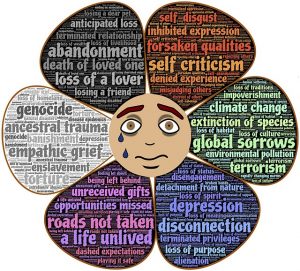As Jessy walked into my office, she expressed a mix of anxiety and anticipation. At the age of 32, she was finally addressing the deep-seated childhood trauma that had haunted her for as long as she could remember. She had carried these wounds like a heavy cloak, their weight bearing down on her and making it hard to fully embrace life. She felt that it was time – she was determined to unravel the tangled mess of her past and begin her journey towards healing. The decision hadn’t come easy though. She had attended past events that I had hosted, and listened in on some of my radio and Tv talks. She had over the years learnt to mask her painful past, but that only hid the wounds, not healed them.
I welcomed Jessy with a warm and compassionate smile. It was important for her to feel safe in the office space, and be assured that she could speak without judgement.
She fidgeted in the armchair, her nervous hands clutching her handbag. “So, where should we start?” she asked, her voice tinged with anxiety. I let her know that she could go ahead and let me know what had brought her in.
She then took a deep breath, feeling the weight of her words before finally whispering, “My childhood…it wasn’t a happy one. My parents fought constantly. I always felt like I was walking on eggshells. The tension was suffocating. It still is.”
I leaned forward slightly, pausing to let her know that I was listening keenly. “Tell me more, if you’re comfortable.”
A lump formed in her throat and her eyes clouded as she recounted the emotional storms that had raged within her home. Her voice cracked as she recalled the time her parents’ arguments escalated to physical violence. On countless occasions, she had hidden in her room, tears streaming down her face and desperately wishing for peace…but it never came.
“I felt like it was all my fault,” she admitted, tears welling up in her eyes. “I thought if I was a better daughter, they’d stop fighting.”
I nodded as I handed her a box of tissues. Her pain was palpable. “It’s common for children to internalize their parents’ conflicts. What you experienced was not your fault, but I understand how you might have believed that as a child.”
Over the next few sessions, Jessy opened up about the chaos and pain that had filled her childhood. The memories were like old scars that had never fully healed. Her voice trembled as she spoke of the constant criticism, the neglect and the feeling of never being good enough. It was raw, and each session felt like she was peeling away layers of a tight band-aid. On one occasion, she called me and told me she couldn’t do the therapy sessions any more – having to relive the painful memories felt too overwhelming for her. I understood where she was coming from, as this is a common occurrence when people are addressing their unresolved traumas. I encouraged her to keep going and take it a day at a time. It wasn’t going to be a walk in the park, but it would be well worth it.
I gently guided Jessy through these difficult conversations, helping her understand the patterns and beliefs that had formed in response to her traumatic experiences. We looked at her parents’ turmoil had how they had shaped her sense of self-worth, leaving her with a constant fear of rejection and an insatiable need to please others. She now realized how those experiences from decades ago had negatively impacted her ability to form and maintain quality relationships. Jessy desired to settle down and have children of her own, but the crippling fear of her parents’ wrangles being replicated in her own marriage kept her from settling down.
As we delved deeper into the past, Jessy was confronted with memories that had long been buried. It was as if she had been living in a fog, unable to see the full extent of her pain. She often sobbed as she remembered the times her father had screamed at her, his words like daggers, telling her that she was a burden. Her mother’s seemingly unending criticism was a voice she just couldn’t shake off even as a grown woman.
“I thought I had forgotten that,” she said through tears. “But it’s been there all along, hasn’t it?”
I nodded again, offering her much-needed comfort and validation. “Our minds have a way of protecting us by burying painful memories. But in therapy, we work to bring those memories to light so that we can process them and find healing.”
The therapy sessions were far from easy. There were moments when she wanted to run away from the pain, to retreat back into her safe cocoon of denial. But I gently reminded her that healing required confronting the past, no matter how painful. She needed unwavering support to make it possible for her to do just that.
With time, Jessy started to recognize that she wasn’t the same person who had walked into my office all those weeks ago. She was beginning to shed the layers of guilt and self-blame, replacing them with a newfound sense of self-compassion and strength. She now understood that her parents’ pain had been passed down through generations, and it was up to her to break the cycle. I noticed how unburdened she was starting to look –her shoulders were less tense, she walked taller and her eyes shone brighter.
During subsequent sessions, she found herself confronting her past with increasing courage and resilience. It was a journey filled with tears, self-discovery and a growing sense of empowerment. While the pain of her childhood trauma would never fully disappear, she now knew that it no longer had the power to define her or set her back. She was taking the first steps towards a brighter, healthier future, one that held the promise of happiness and self-acceptance.
You too can choose to heal from your childhood wounds / traumas.
**names have been changed to protect the identity of the client.**



